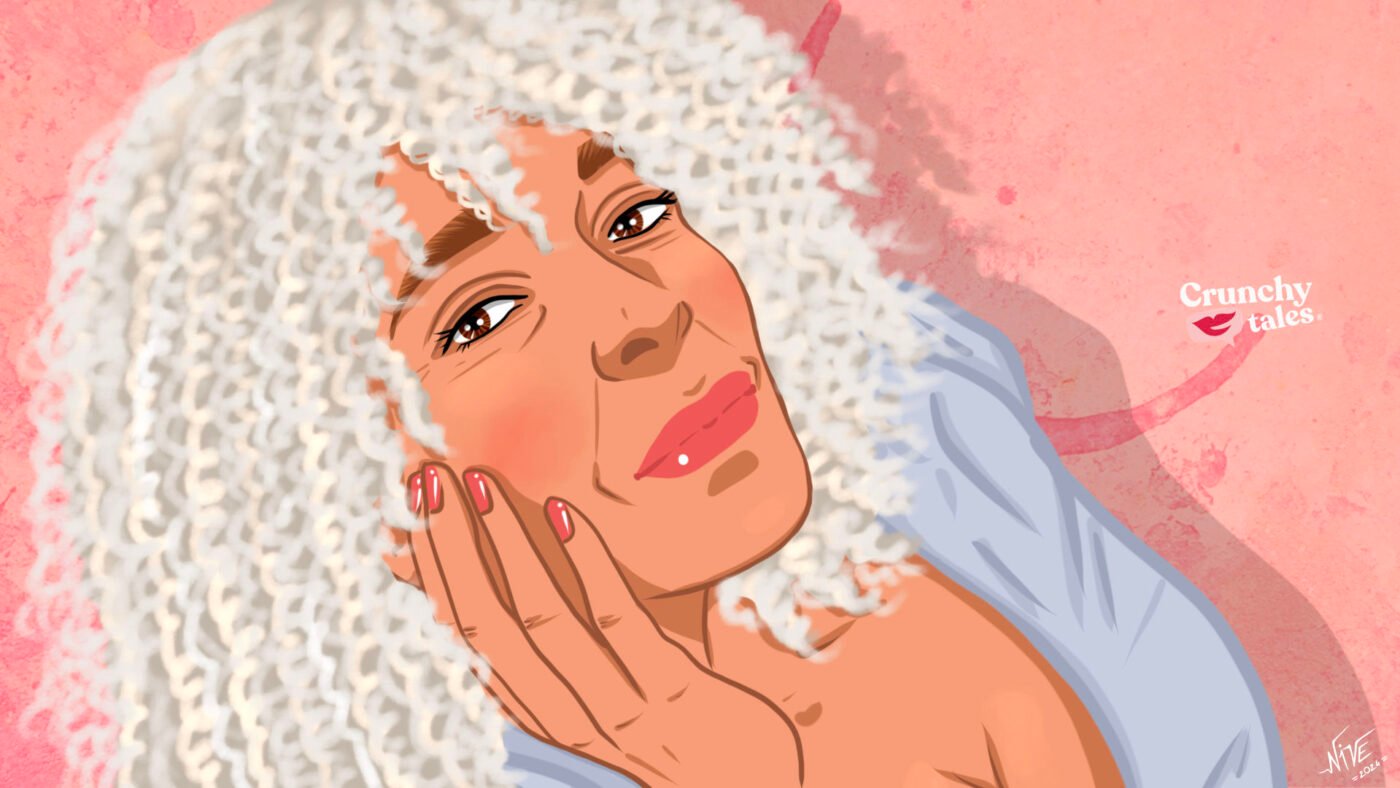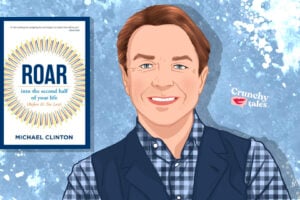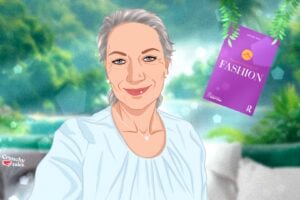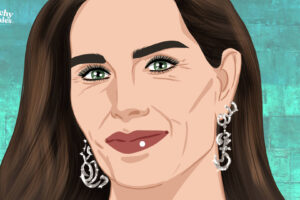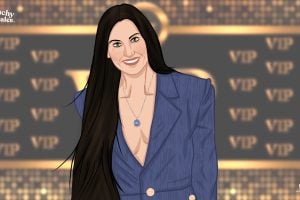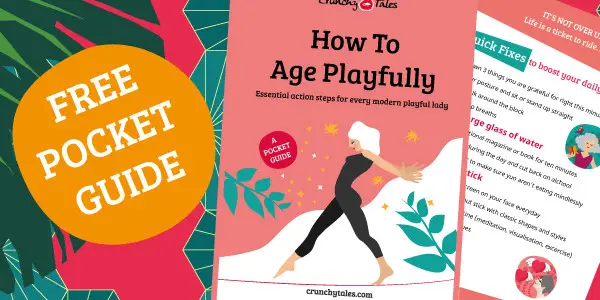Mia Maugé: Redefining Beauty Standards in Modeling
Becoming a model in midlife is a dream many women would like to accomplish. Mia Maugé burst onto the scene in 2020 in the midst of the global pandemic picked up by a modelling agency at age 54 championing diversity and inclusion in the fashion system.
Since then, as a model and content creator, Mia has worked with an array of brands including; Marks & Spencer, Avon, Lancôme, Cult Beauty, Disney, Barclays, Russell & Bromley, Vichy/L’Oreal Paris and appeared on the cover of ‘Stylist Magazine’.
Through sharing her own experiences Mia aims to change the narrative around midlife and ageing in general. “As midlifers, we continue to flourish and evolve – she says– whilst we take ownership of our deserved space in society.”
CrunchyTales has met the badass model who made everyone sigh in front of her fabulous grey hair.
Mia, you’re a single mum with two daughters, who reinvented herself several times. What inspired you to become a model at 54?
A lack of representation and age inclusivity in beauty and fashion. I got scouted on Instagram in 2020 when I was 54. I changed my page from private to public because I wanted to be vocal and visible as a midlife woman. I was tired of shopping with brands that didn’t see me and women like me. Spending money online and in shops surrounded by images of beautiful young people and very few women over 40.
Beauty transcends age, and I felt ignored as a midlife female consumer. So I went on to Instagram to see if other women felt like I did, and within 4 weeks I got scouted to become a model myself. I never imagined doing this job, but it has a purpose. I love to be in spaces where you don’t expect to see a woman my age. Disrupting negative perceptions around ageing and stereotypes is my mission.
You strike me as being a confident woman and certainly, it’s not easy posing in front of a camera. But I know that it’s not always been like that. How did you succeed in turning into a badass woman?
I’ve always been camera-shy, so it was really difficult at first. I was so nervous, but I reminded myself of the importance of what I was doing. I had been allowed to be the representation I felt was lacking and much needed, and that was way more important than any insecurities or wavering self-confidence I might be feeling. I learnt on the job. There was no training, and I just had to dig deep to find my badass! She was there lurking in the background all along!
Can you share with us a memory of your first shoot? How did you feel?
My very first fashion shoot was fun. I wasn’t too nervous for this one. It was a nice team and a fantastic intergenerational cast. However, the second one was a lingerie shoot. I didn’t sleep the night before. I was shaking before going on set, but once I was on set, I began to relax. The crew were wonderful and they completely put me at ease.
I danced in my knickers and bra as the only model over 35. It turns out I was the first model over 50 that the high street brand had ever booked. So there was a lot of press and focus on me. I was on TV, on billboards, in-store and in print. Everywhere! It was quite surreal. I’ve never been body confident, but doing that job shifted something in me. I totally enjoyed the experience and found it really liberating.
Social media platforms have played a great role in your career. Any tips for those midlife ladies who don’t know how to use them as a leverage, powerful tool?
I’d say authenticity is key! Find what you feel passionate about and amplify that. Most of all enjoy it!
In your opinion, why does representation matter and how can the fashion system improve that?
When I was becoming a woman in the 80s there were no models who looked like me, my body type, my hair texture, my skin tone and beauty standards were really Eurocentric. It can make you feel overlooked, and less important, it can also cause insecurities and poor body image. In 2020 things changed for the next generation. There is much more diversity in terms of body type, skin tone and hair texture.
However, the lack of representation of women over 40 took me back to the 80s when I was feeling ignored and marginalised by society. I didn’t want to feel like that again.
It’s so important to be seen. The beauty industry and in particular skincare, has seen a positive change since I started modelling in 2020, but fashion needs to step up. It is so youth-focused. Representation of women over 40 isn’t just important for my generation, it’s important that the younger generations see that life doesn’t stop at 35-40 and that they will still be valued by society. It will help to take the fear out of ageing that we are seeing.
Ageism and racism are still very difficult to challenge. What are you doing to break the barriers?
Existing! Pushing to be seen and heard. I am now a public speaker, I also consult brands, and I am a content creator too. All of this has positioned me to be able to speak on ageism and racism, and hopefully raise awareness and make change.
Your fabulous grey hair has brought you luck. Why did you decide to ditch the dye and why do you recommend it?
I always liked the colour, but society didn’t. At 33, I didn’t want society to deem me old so I dyed it, and I continued to dye it until 2016 when I was 51. My daughters both persuaded me to go for it. They didn’t like the smell of the home dye I used every two weeks, and they thought it would look beautiful silver. So I gave it a go, and even though it was difficult, I slowly fell in love with what was growing naturally in my head. It took two challenging years to grow it out fully, and I haven’t regretted it at all. It’s completely changed my life.
I definitely wouldn’t be doing what I do now. I call it my silver magic! I’d recommend it because it really opened my eyes to the ageism in the world, but also inside my head, my inner ageist was challenged. I realised that I was simply conforming to society’s ageist beauty standards without question. I realised that there is empowerment in that simple act at the time it was quite a radical thing to do.
It was liberating to be freed of the pressure of fighting with what grew from my scalp because I’d been taught that it was undesirable and made me look old. When I see a woman with her natural silvers, I see a confident woman who is creating her own standard of beauty. Yes. I’d say it’s empowering, and that is a beautiful thing!
Your life at the moment is at full speed and soon you’ll publish a book, too. Can you tell us a bit more about it?
Yes, I was scouted on Instagram by a literary agency. I’ve just completed the 2nd draft of the book proposal, my agent says there is interest from publishers, and I’m hopeful to have the book completed by spring. I can’t share exactly what it’s about at this stage. Please just watch this space!
Finally, what would you suggest to those midlife women who struggle to find a place in this difficult ageist world?
I would say to practice gratitude for life and longevity. That is the root of harmony in your life. The alternative to a long life is to die young. If you’re lucky to have a long life, then ageing is inevitable. Embrace it, and make sure it is fulfilling and vibrant. Find your passion and joy in life and focus on that. Make it your purpose to be happy!
Like this post? Support Us or Sign up to our newsletter to get more articles like this delivered straight to your inbox!

